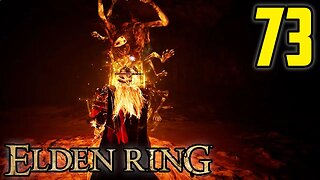Premium Only Content

river in mountain dragon tiger
Taoist ancestral court refers to the place where the ancestors of the Taoist sect lived, promoted or were buried.
A corte ancestral taoísta se refere ao local onde os ancestrais da seita taoísta viveram, promoveram ou foram enterrados
Zhengyiyi, also known as the Five Dou Rice Sect, was formed in the late Eastern Han Dynasty (AD 184), and Zhang Daoling was the "Master of Taoism". The Zhengyi school also has three ancestors, Longhushan, Maoshan and Gezaoshan. The Zhengyi school is divided into Maoshan, Lingbao, Qingwei, Jingming and other schools, but it is still represented by Tianshi Tao. Zhang Daoling, also known as Zhang Tianshi, is the founder of Taoism. Mainly based on spells and spells, respecting the elders as the ancestors of Taoism, it is for the Taiqing Sect. In addition, there are many folk religions influenced by Taoism, such as Fujian Trinity Sect, Hong Kong Congenital Taoism, Korean Golden Fairy Society, Vietnam Caotai Sect, and Southeast Asian Moral Sect.
Zhengyiyi, também conhecida como a Seita Five Dou Rice, foi formada no final da Dinastia Han Oriental (184 DC), e Zhang Daoling era o "Mestre do Taoísmo". A escola Zhengyi também tem três ancestrais, Longhushan, Maoshan e Gezaoshan. A escola Zhengyi está dividida em Maoshan, Lingbao, Qingwei, Jingming e outras escolas, mas ainda é representada por Tianshi Tao. Zhang Daoling, também conhecido como Zhang Tianshi, é o fundador do Taoísmo. Baseada principalmente em feitiços e feitiços, respeitando os anciãos como ancestrais do Taoísmo, é para a Seita Taiqing. Além disso, há muitas religiões populares influenciadas pelo taoísmo, como a seita da Trindade de Fujian, o taoísmo congênito de Hong Kong, a Sociedade das fadas douradas coreanas, a seita Caotai do Vietnã e a seita moral do sudeste asiático.
Longhu Mountain is the place where the descendants of Zhangling lived when the Heavenly Master Tao was developed to the Dragon and Tiger Sect. It is the center of the Dragon and Tiger Sect and Zhengyiyi. It occupies an important position among the famous mountains of Taoism. The mountain was first settled by the descendants of Zhang Ling. According to the Taoist priests, the fourth-generation Sun Zhang Sheng of Zhang Ling had gone to Longhu Mountain during the Three Kingdoms or the Western Jin Dynasty Yongjia (AD 307-312). For the Dragon and Tiger Sect in the Three Kingdoms or Western Jin Dynasty. There are many doubts about this, lack of supporting evidence, it is difficult to be regarded as a letter of history. Judging from the inscriptions on the ancient steles, the earliest Taoist temple in Longhu Mountain was Zhang Tianshi Temple built in the eighth year of Baoda in the Southern Tang Dynasty (AD 950). The first descendant of Zhangling who lived in Longhu Mountain was the 21st generation Zhang Bingyi.
A Montanha Longhu é o lugar onde os descendentes de Zhangling
viveram quando o Mestre Celestial Tao foi desenvolvido para a Seita do Dragão e do Tigre. É o centro da Seita do Dragão e do Tigre e de Zhengyiyi. Ele ocupa uma posição importante entre as famosas montanhas do Taoísmo. A montanha foi colonizada pela primeira vez pelos descendentes de Zhang Ling. De acordo com os sacerdotes taoístas, a quarta geração de Sun Zhang Sheng de Zhang Ling foi para a montanha Longhu durante os Três Reinos ou a Dinastia Jin Ocidental Yongjia (307-312 DC). Para a Seita do Dragão e do Tigre nos Três Reinos ou Dinastia Jin Ocidental. Há muitas dúvidas sobre isso, falta de evidências, é difícil ser considerada uma letra da história. A julgar pelas inscrições nas antigas estelas, o primeiro templo taoísta na montanha Longhu foi o templo Zhang Tianshi, construído no oitavo ano de Baoda na Dinastia Tang do Sul (950 DC). O primeiro descendente de Zhangling que viveu na Montanha Longhu foi Zhang Bingyi da 21ª geração.
#tao,#taoismo,#river,#dragontigermoutain,#footage,#china,
-
 8:40
8:40
Tundra Tactical
18 hours ago $3.93 earnedThe Executive Order Wishlist.
6.49K1 -
 7:22:52
7:22:52
SpartakusLIVE
17 hours agoSaturday SPARTOON Solos to Start || Duos w/ StevieT Later
99.1K2 -
 28:40
28:40
SLS - Street League Skateboarding
8 days agoTOP MOMENTS IN WOMEN’S SLS HISTORY! ALL THE 9’s - Rayssa Leal, Leticia Bufoni, Chloe Covell & more…
62.9K11 -
 2:03:03
2:03:03
The Connect: With Johnny Mitchell
15 hours ago $2.91 earnedHow Mexican & Chinese Cartels Control Illegal Marijuana Cultivation In America Using SLAVE Labor
14.4K3 -
 14:46
14:46
Mrgunsngear
16 hours ago $1.02 earnedPrimary Arms GLx 1x Prism With ACSS Reticle Review
16.3K7 -
 22:37
22:37
Degenerate Plays
15 hours ago $0.20 earnedI'm A Psychic Now - Elden Ring : Part 73
8.29K -
 2:32:02
2:32:02
Jamie Kennedy
9 hours agoEp. 195 Horror Legend Barbara Crampton
13.3K -
 23:00
23:00
Exploring With Nug
1 day ago $33.26 earnedHis Truck Was Found Crashed in the Woods… But He’s Gone!
141K8 -
 27:09
27:09
MYLUNCHBREAK CHANNEL PAGE
1 day agoDilmun: Where Life Never Ends
106K61 -
 2:58:32
2:58:32
Slightly Offensive
19 hours ago $113.46 earnedHas Trump FAILED US? The ABSOLUTE STATE of The Right Wing | Guest: Nick Fuentes
157K221